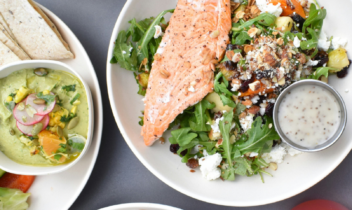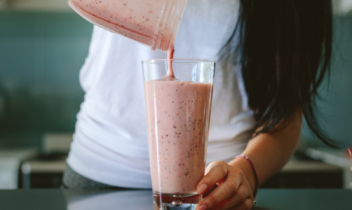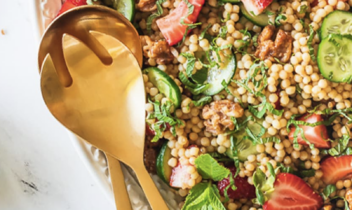
Can I eat watermelon while on a sugar-free diet? Which fruits are good for a sugar-free diet?
Answer
Watermelon like many fruits does contain sugar (about 10 grams per whole cup, diced). However, it is a naturally occurring sugar and is accompanied by other nutritious components (think water, fiber, vitamins), found in the fruit.
Watermelon is mostly carbohydrate (those naturally occurring sugars) with very little protein or fat. For individuals with diabetes (and even those who may be pre-diabetic) it’s important to balance carbohydrates, fat, and proteins at eating occasions to prevent sharp peaks in blood sugar.
Watermelon has a higher glycemic index (72), yet a low glycemic load (2), per 100 gram serving. Since the glycemic load of watermelon is low, it is less likely to raise your blood sugar levels.
Eating watermelon with foods that provide some protein and/or fat can help balance out the carbohydrates in the fruit. Consider pairing a small handful of nuts, an ounce of cheese, or even an egg, with watermelon. The ‘balancing’ of carbohydrates, fat, and protein can help slow down digestion, which means your blood sugar won’t peak as quickly after eating.
Also check out these top 10 ways to enjoy watermelon and consider these quick and tasty recipes for ways to include both watermelon and fresh vegetables into your meals.
Watermelon Rind, Carrot & Pineapple Slaw
Watermelon is an iconic summer fruit for many of us but remember to also eat a colorful variety of fruits throughout the year. Yes, fruits like watermelon do contain sugar, but this naturally occurring sugar is different from added sugar. When it comes to reducing sugar intake, your goal should be to reduce added sugars. Fruit is beneficial as part of a healthy eating pattern because it also contains water, fiber, and other nutrients.
When it comes to fruits, some do impact your blood sugar levels differently. Fruits that have a low glycemic load (less likely to spike your blood sugar) include plums, grapefruits, peaches, pears, and berries. For sugar levels in common fruits and veggies, visit the nutrition database and use the drop-down food label under each individual produce.


